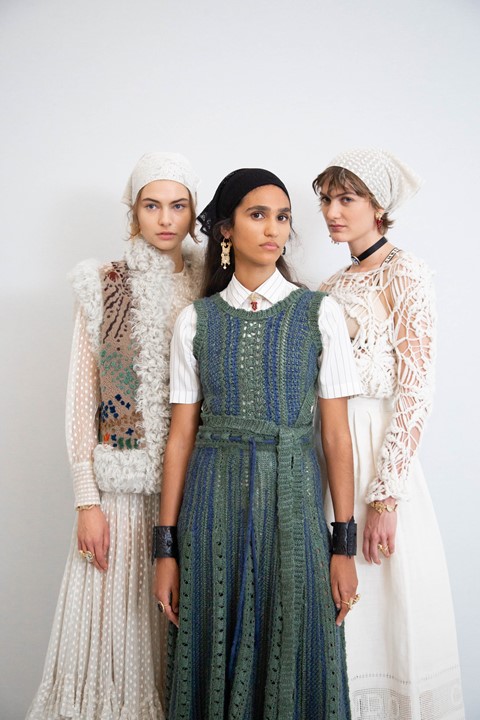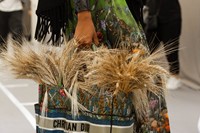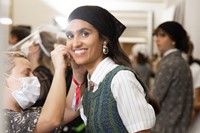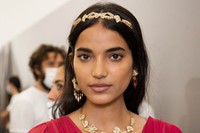Drawing on Maria Grazia Chiuri’s Italian heritage, the physical – but socially distanced – show took place in the town of Lecce, Puglia
Recent years have seen cruise collections take place in increasingly far-flung locales – from Havana to Shanghai, Rio de Janeiro to New York – and the spectacles of those shows grow ever larger. The coronavirus pandemic, though, brought the phenomenon to an abrupt pause earlier this year: Chanel chose to show its resort collection via lookbook, in lieu of a planned show on the island of Capri, Gucci cancelled its cruise show in San Francisco entirely, while other brands have delayed or rescheduled, with questions arising about the environmental impact and expense of such presentations.
Yesterday evening, though, Dior broke from the pack, presenting a Cruise 2021 collection in the small town of Lecce in Puglia, southern Italy. It is the place that Maria Grazia Chiuri had always planned the hold the show – she herself is Italian, and has long been inspired by the country’s craftmanship – and perhaps the only difference was the lack of physical attendees, who, instead of being flown in from across the world for the evening, would have to watch from their computer screens at home (there was, however, an intrigued audience of locals – and a few devoted clients – who watched the show unfold from the balconies around the main square).
The rest, though, was as you might expect from a cruise extravaganza – there was a dazzling set by feminist artist Marinella Senatore, in collaboration with Puglia-based light designers Fratelli Paris, where 30,000 coloured bulbs evoked the luminaire of local folk festivals and contained a number of the artist’s slogans; a rousing score by the Italian composer Paolo Buonvino, who conducted an 18-strong orchestra from Rome, alongside 21 local musicians; a performance by Italian rock musician Giuliano Sangiorgi, folk dancers, and, of course, a vast 90-look collection worn by a slew of the world’s top models.
It amounted to tentative proof that the transporting spectacle of cruise shows past could translate to our current era of social distancing and travel restrictions – estimates from the house said that about 20 million people worldwide would tune in for the broadcast. But Chiuri – despite clear indications that Dior will retain its traditional calendar when restrictions are lifted – noted that this was not simply a case of a show for a show’s sake. Like previous collections, the emotion behind her creative decisions are deeply felt: Puglia is the birthplace of her father and, long before coronavirus began, she was collaborating with artisans in Lecce in order for the collection to pay ode to the area’s distinct culture of craft. So within the collection there were numerous collaborations: with Le Costantine Foundation, which aims to preserve centuries-old textile arts in Puglia; with lace embroiderer Marilena Sparasci; weavers Tessitura Calabrese, and more.
Instead, the show became about support and celebration: “It was essential for Dior to continue these collaborations, to support and showcase the virtuosity of these artisans and artists more than ever,” the house said in a statement. “So that the beauty of their gestures, emotion and poetry may endure.” Chiuri – who has long collaborated with women artists and creators – also noted that this was a feminist issue in itself; most of those who undertake this type of craft have traditionally been women within a domestic space, she wanted to elevate them to the heights of those who work within the atelier in Paris.
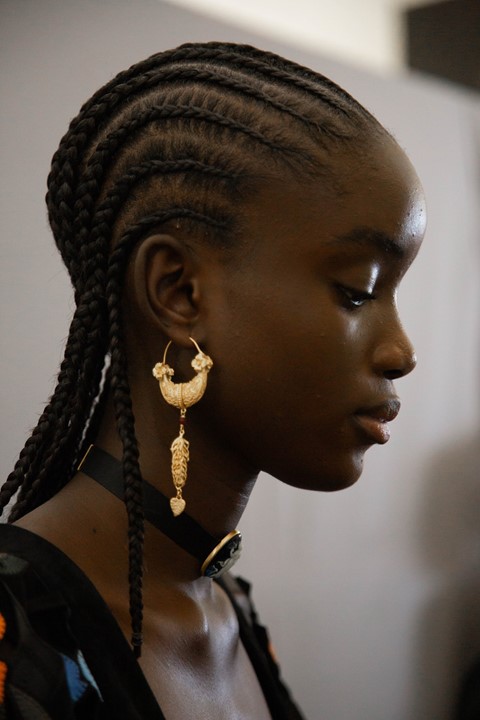
It afforded the show a powerful and emotive energy, Chiuri propositioning a collection which balanced the intimate charm of homespun craft with the luxury and might of the house of Dior. A sheer tulle dress might be stitched with delicate ears of wheat; knitwear constructed in spidery crotchet; easy shift dresses in folk-inspired woven fabrics. Colours ranged from reds and oranges to natural shades of ivory and white. Tie-dye was also prevalent – whether decorating the hems of jeans, or looping around tulle skirts and dresses – and so too denim, which came in a 70s-style patchwork. Chiuri also said she found inspiration in local beliefs in mysticism and magic, here evoked in her signature use of embroidery which was reiterated throughout.
“During this period, I sought to give collective efforts a new dimension,” the designer surmised. “Despite the disadvantages of distance, bringing a different perspective to our daily lives has given us strength and imagination.”
